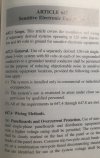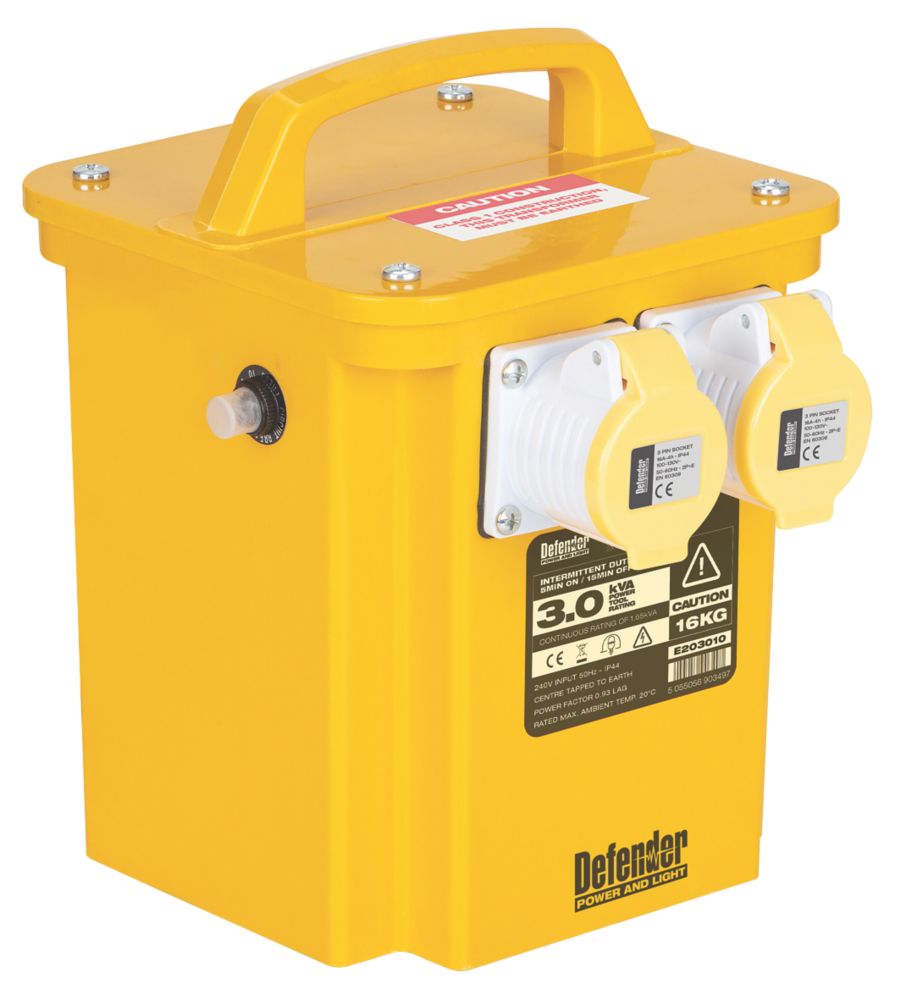I wonder if most of the DACs are even connecting the PE internally. Maybe only for a mains transformer shield to keep leakage low.budget DACs and Speaker-/HP-Amps from Topping, SMSL, etc are 3-prong,
-
WANTED: Happy members who like to discuss audio and other topics related to our interest. Desire to learn and share knowledge of science required. There are many reviews of audio hardware and expert members to help answer your questions. Click here to have your audio equipment measured for free!
You are using an out of date browser. It may not display this or other websites correctly.
You should upgrade or use an alternative browser.
You should upgrade or use an alternative browser.
Survey: Is your mains-powered gear mostly 2-prong or mostly 3-prong?
- Thread starter KSTR
- Start date
Suffolkhifinut
Major Contributor
- Joined
- Dec 8, 2021
- Messages
- 1,224
- Likes
- 2,027
They aren’t widely in use today and in all honesty had forgotten about them. A few years ago before retirement went to see an Electrical contractor on site the Architect had included them in the electrical specification think it was for a retro effect.I forgot about them. I understand what you mean now. However, it is purely academic. They are not general purpose sockets; you cannot plug in any device that is on sale within the UK. They are for speciality circuits, for instance for lights are switched from a wall switch. I haven’t seen them on any building other than some country house hotel.
I found out that the power amplifier Yamaha A-S1200 and A-S1000 uses two prongs, but the Yamaha NP-S2000, the network player from that same series, uses three. Does that look random to you as well?

Then there is this guy chilling

Then there is this guy chilling
- Joined
- Feb 23, 2016
- Messages
- 20,690
- Likes
- 37,414
This this wonderful survey has concluded definitively that most of us have both 3 prong and 2 prong electrical gear. I think I could have guessed as much.
If you mean Americans by "us" that is true.This this wonderful survey has concluded definitively that most of us have both 3 prong and 2 prong electrical gear. I think I could have guessed as much.
- Joined
- Feb 23, 2016
- Messages
- 20,690
- Likes
- 37,414
Well in areas where one has no choice then it is even less useful.If you mean Americans by "us" that is true.
3 Wire sub, TT and power strip
2 wire integrated and phono amp
Much like isolation xfmrs 'balanced power' is Code regulated. Specifically not permitted for residential use.
The Code does not prohibit things they don't 'like' they do so based on public safety and when allowed it requires additional protections.
The main issues:
-No grounded conductor
-If you have a SL fault only 1/2 the fault I will flow and may not trip the protection. You will likely not know it is faulted.
The faulted line goes to G, ergo, the center tap.
You have 60 V across this short loop.
If a solid bolted fault you have 60 V over 12" of wire (0.4 mOhm) plus line Z., likely huge flash, likely fire.
The other L is 60 V and the under-voltage may damage the load.
That is why special low Z feeder and branch circuits are required, among other things like GFCI, etc.
For those interested

2 wire integrated and phono amp
Much like isolation xfmrs 'balanced power' is Code regulated. Specifically not permitted for residential use.
The Code does not prohibit things they don't 'like' they do so based on public safety and when allowed it requires additional protections.
The main issues:
-No grounded conductor
-If you have a SL fault only 1/2 the fault I will flow and may not trip the protection. You will likely not know it is faulted.
The faulted line goes to G, ergo, the center tap.
You have 60 V across this short loop.
If a solid bolted fault you have 60 V over 12" of wire (0.4 mOhm) plus line Z., likely huge flash, likely fire.
The other L is 60 V and the under-voltage may damage the load.
That is why special low Z feeder and branch circuits are required, among other things like GFCI, etc.
For those interested

Last edited:
My Luxman is the same.I found out that the power amplifier Yamaha A-S1200 and A-S1000 uses two prongs, but the Yamaha NP-S2000, the network player from that same series, uses three. Does that look random to you as well?
View attachment 199687
Then there is this guy chilling
View attachment 199688
Leaving the +/- DC rails floating until the speaker output may reduce noise.
Some amp guru can chime in.
My old Mac had 3 and the sec of the xfmr was center-tapped to frame.
About the same here, maybe more 2 prongs when I count the 5 Adcom 545 II amps.Tie. NAD M10 and Purifi are Class I. RME ADI-2 FS B and miniDSP 2x4 HD are Class II. I'm currently not running my subs (room space) but when I do set them up, they'll be powered by Sunfire woofer monoblocks (Class 1) or an Adcom 555 (2 prong, maybe not certified).
Much ado about nothing.
If you want to have an balanced power supply get an Type 2 UK building sided transformer

 www.carroll-meynell.com
www.carroll-meynell.com

They can be used with an RCD on the output and they get uses in potentially wet environments with potentially damaged cables
like constructions sides.

 www.screwfix.com
www.screwfix.com
they are cheap especially second hand but most of them cant be operated continuously at high power.
for example the 1KVA transformer is maybe only 200VA continuous.

110V Electrical Supply Systems - Carroll & Meynell
110V Electrical Supply Systems SystemsThere exists within the power distribution world two different types of 110V supply system.Care must be taken to ensure the correct transformer is chosen for the application.Otherwise there is the possibility of creating a short circuit when connecting...

They can be used with an RCD on the output and they get uses in potentially wet environments with potentially damaged cables
like constructions sides.

Defender 3000VA Intermittent Transformer Distribution Kit 240V/110V Yellow - Screwfix
Order online at Screwfix.com. 3kVA power tool transformer with 2 x 16A outlets and thermal cut-out switch. FREE next day delivery available, free collection in 1 minute.
they are cheap especially second hand but most of them cant be operated continuously at high power.
for example the 1KVA transformer is maybe only 200VA continuous.
theREALdotnet
Major Contributor
- Joined
- Mar 11, 2022
- Messages
- 1,194
- Likes
- 2,062
You do know that sticky black PVC tape will ruin the audio signal!
Yeah, vinyl has a way of ruining the sound…
Hey!Yeah, vinyl has a way of ruining the sound…
I just listened to side 1 of Chet and it sounded amazing.
You hurt my feelings
Side 2 on tap
Lol
theREALdotnet
Major Contributor
- Joined
- Mar 11, 2022
- Messages
- 1,194
- Likes
- 2,062
I’m not sure if Americans comprehend that we have a fuse inside the plug.
Wimps! For real men the plug IS the fuse!
theREALdotnet
Major Contributor
- Joined
- Mar 11, 2022
- Messages
- 1,194
- Likes
- 2,062
Didn’t the Declaration of Independence explicitly outlaw contraptions like this?
sam_adams
Addicted to Fun and Learning
- Joined
- Dec 24, 2019
- Messages
- 996
- Likes
- 2,415
When you see dual enclosing squares, it's 2-prong (class-II).
Not necessarily the case:
My house (in Denmark) still has fabric insulated wiring for the most part. And no earthed sockets anywhere ... ;-)Back then some older houses still had various round-pin plugs for appliances, and even wiring that had fabric and rubber insulation.
KSTR
Major Contributor
- Thread Starter
- #138
This would then be functional earth (for better EMC).I wonder if most of the DACs are even connecting the PE internally. Maybe only for a mains transformer shield to keep leakage low.
If they don't connect the chassis (and audio-GND) to PE the internals (power supply) then must be class-II and the device labeled as such. That is, unless a primary shield also doubles up as protective earthing means (quite unlikely).
Which gets us to this...
Not immediately illegal but a rare case and considered bad practice AFAIK.Not necessarily the case:
View attachment 199726
It is not clear what's going here. The only thing we know from the labelling is that the device does not rely on PE for safety, that's what class-II is about. It's established by re-inforced insulation of mains-carrying parts and conductors, still protecting in a single-fault scenario.
But, did they just use a 3-prong inlet/fuse/switch combo because it was convenient and the PE is actually not connected to anything? Or did they use it for some form of functional earthing?
Is audio GND and chassis actually floating wrt to mains earth or not? This is the all important question here.
Overall, looking at the number of prongs is not 100% sufficient to tell if audio GND is floating or not but for most gear the correlation holds. 2-prong --> floating audio GND, 3-prong --> earthed audio GND (not necessarily a direct zero Ohms bond. In power amps we often see an "isolator" circuit between audio GND and PE which consists of antiparallel power diodes bridged with capacitor and/or resistor).
Last edited:
Our radio station uses a number of Numark DJ-type CD players as they're cheap enough and include fast cueing and USB inputs. They all are double-insulated, and have the correct symbol, but use the three-pin IEC connector, with the earth pin left floating. I think it bad practice, but seems to be common.This would then be functional earth (for better EMC).
If they don't connect the chassis (and audio-GND) to PE the internals (power supply) then must be class-II and the device labeled as such. That is, unless a primary shield also doubles up as protective earthing means (quite unlikely).
Which gets us to this...
Not immediately illegal but a rare case and considered bad practice AFAIK.
It is not clear what's going here. The only thing we know from the labelling is that the device does not rely on PE for safety, that's what class-II is about. It's established by re-inforced insulation of mains-carrying parts and conductors, still protecting in a single-fault scenario.
But, did they just use a 3-prong inlet/fuse/switch combo because it was convenient and the PE is actually not connected to anything? Or did they use it for some form of functional earthing?
Is audio GND and chassis actually floating wrt to mains earth or not? This is the all important question here.
Overall, looking at the number of prongs is not 100% sufficient to tell if audio GND is floating or not but for most gear the correlation holds. 2-prong --> floating audio GND, 3-prong --> earthed audio GND (not necessarily a direct zero Ohms bond. In power amps we often see an "isolator" circuit between audio GND and PE which consists of antiparallel power diodes bridged with capacitor and/or resistor).
S.
I have a closet full of three pin IEC cords. I'd have to do some major searching to find any two pin. I think I'm typical in this regard. So, yes, it's likely this was done as a convenience and the third pin is vestigial.
Similar threads
- Replies
- 12
- Views
- 614
- Replies
- 7
- Views
- 880
- Replies
- 8
- Views
- 506
- Replies
- 3
- Views
- 2K
